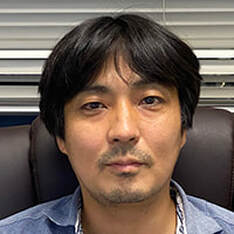|
Date: 12 April 2022 (Tuesday)
Time: 11am - 12pm Format: Zoom Webinar (registration is required) Hosted by: Yun XIA, LKCM & ExCo SCSS |
ABSTRACT
Targeted genome editing via engineered nucleases is revolutionizing biomedical research and holds tremendous potential for clinical applications. Despite rapid advances in the field, in vivo targeted transgene integration is still infeasible because current tools are inefficient, especially for non-dividing cells, which compose most adult tissues. This poses a tremendous barrier for uncovering fundamental biological principles and developing treatments for a broad range of devastating genetic disorders. Recently, we have developed two in vivo gene knock-in methodology (i.e. HITI and SATI) that enable targeting a broad range of mutations and cell types including non-dividing cells. As a proof of concept of their therapeutic potential, we demonstrated the efficacy of them in improving therapeutic phenotypes using a rat model of blindness and a mouse model of premature aging. The developed methods establish new avenues for basic research and genome-editing therapies
BIO
Keiichiro Suzuki began to learn DNA repair and genome-editing machineries in filamentous fungi when he was an undergraduate and a graduate student at Saitama University in Japan. He was a research associate of the Belmonte lab at The Salk Institute for biological studies from 2010 to 2017. Now a day, he is a Specially Designated Professor of Institute for Advanced Co-Creation Studies at Osaka University in Japan from 2017. He had been developed highly efficient genome-editing methods for in vitro human cells as well as in vivo body, which would be useful for repairing the mutations in the patients’ body. His current interest is to develop novel genome-editing technologies for basic biology as well as genome-editing therapy.
Targeted genome editing via engineered nucleases is revolutionizing biomedical research and holds tremendous potential for clinical applications. Despite rapid advances in the field, in vivo targeted transgene integration is still infeasible because current tools are inefficient, especially for non-dividing cells, which compose most adult tissues. This poses a tremendous barrier for uncovering fundamental biological principles and developing treatments for a broad range of devastating genetic disorders. Recently, we have developed two in vivo gene knock-in methodology (i.e. HITI and SATI) that enable targeting a broad range of mutations and cell types including non-dividing cells. As a proof of concept of their therapeutic potential, we demonstrated the efficacy of them in improving therapeutic phenotypes using a rat model of blindness and a mouse model of premature aging. The developed methods establish new avenues for basic research and genome-editing therapies
BIO
Keiichiro Suzuki began to learn DNA repair and genome-editing machineries in filamentous fungi when he was an undergraduate and a graduate student at Saitama University in Japan. He was a research associate of the Belmonte lab at The Salk Institute for biological studies from 2010 to 2017. Now a day, he is a Specially Designated Professor of Institute for Advanced Co-Creation Studies at Osaka University in Japan from 2017. He had been developed highly efficient genome-editing methods for in vitro human cells as well as in vivo body, which would be useful for repairing the mutations in the patients’ body. His current interest is to develop novel genome-editing technologies for basic biology as well as genome-editing therapy.

